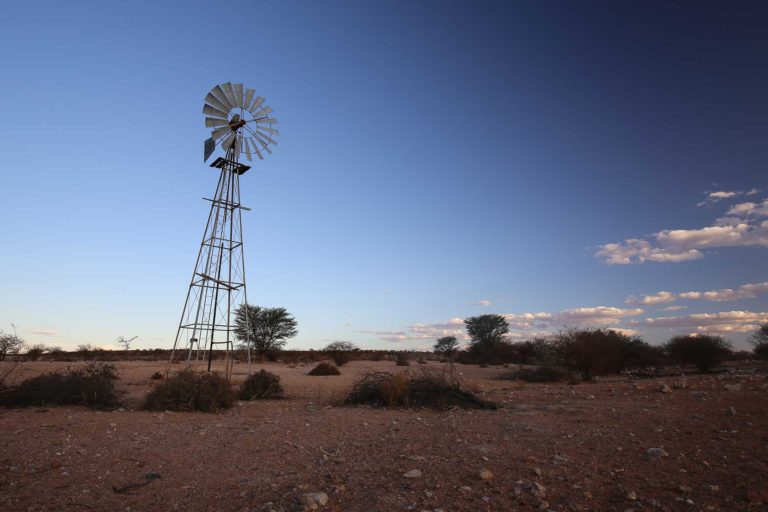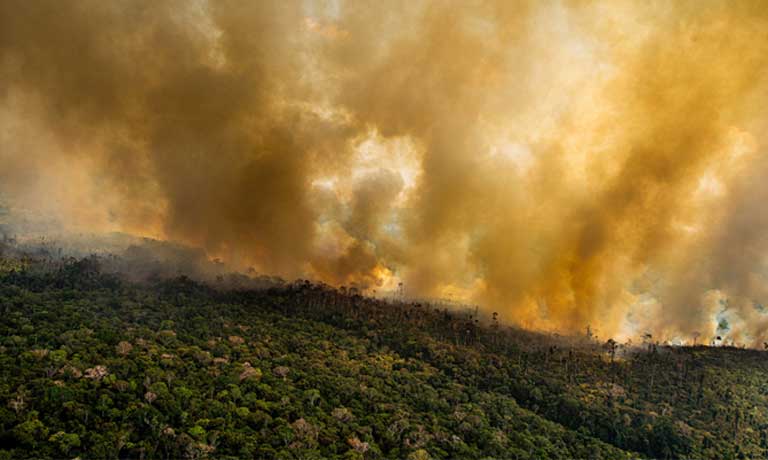
- Earth’s operating systems have stayed in relative balance for thousands of years, allowing the flourishing of civilization. However, humanity’s actions have resulted in the transgressing of multiple planetary boundaries, resulting in destabilization of those vital operating systems.
- This week scientists announced that humanity has transgressed the freshwater planetary boundary. Other boundaries already crossed are climate change, biosphere integrity, biogeochemical cycles (nitrogen and phosphorous pollution), land-system change, and novel entities (pollution by synthetic substances).
- In the past, the freshwater boundary was defined only by “blue water” — a measure of humanity’s use of lakes, rivers and groundwater. But scientists have now extended that definition to include “green water” — rainfall, evaporation and soil moisture.
- Scientists say soil moisture conditions are changing from boreal forests to the tropics, with abnormally dry and wet soils now common, risking biome changes. The Amazon, for example, is becoming far dryer, which could result in it reaching a rainforest-to-savanna tipping point, releasing large amounts of stored carbon.
Humanity’s modification of the water cycle has pushed the world further beyond a safe operating space for continued life on Earth, say scientists. A reassessment of the planetary boundary for freshwater that now includes rainfall, soil moisture and evaporation — so-called “green water” — found the boundary to be “considerably transgressed,” with the situation likely to worsen before any reversals in the trend will be observed. Previously, researchers had only considered rivers, lakes and groundwater in their evaluations.
“Green water modifications are now causing rising Earth system risks at a scale that modern civilizations might not have ever faced,” according to researchers from the Stockholm Resilience Centre in collaboration with colleagues from Germany, Netherlands, Finland, Austria, Australia, the U.S. and Canada. The findings were published this week in the journal Nature Reviews Earth & Environment.
“This is a wake-up call that we need to stop how we modify green water,” says lead author Lan Wang-Erlandsson from the Stockholm Resilience Centre at Stockholm University. “We are profoundly changing the water cycle,” she says, noting that this Earth system destabilization is now affecting the health of the entire planet, making it significantly less resilient to environmental shocks.

Based on the findings, water is now the sixth boundary to be transgressed, out of the nine identified by the Planetary Boundaries Framework. Published in 2009 and updated regularly, the framework demarcates a safe operating space for humanity, beyond which civilization could collapse, and life altered as we know it. The other boundaries already transgressed are climate change, biosphere integrity, biogeochemical flows (nitrogen and phosphorous pollution), land-system change, and also since 2022, novel entities, which includes pollution by plastics and other humanmade substances.
Until now, the freshwater boundary had been considered to be within the safe zone. The so-called “freshwater use” boundary was based on allowable human consumption, and set at 4,000 km3/year of water utilized and not returned as runoff. It evaluated water extracted from rivers, lakes and groundwater, so-called “blue water.”
The updated assessment uses soil moisture in the root zone of plants to measure the “green water” boundary because it is directly influenced by human pressures, and because it directly impacts a range of large-scale ecological, climatic, biogeochemical and hydrological dynamics.

During droughts, for example, plants can maintain photosynthesis and transpiration by accessing soil moisture, but once those moisture levels dip below a critical threshold, vegetation mortality increases, especially for plants like tropical trees that do not commonly have alternative drought coping strategies. The study points out that root-zone soil moisture anomalies are also key drivers of the land carbon cycle, and that modifications in soil moisture under a high carbon emission scenario could risk turning land from a net carbon sink to a carbon source by the middle of this century.
Evidence of this escalating process is already to be found in the decreased resilience of critical ecosystems such as the Amazon and Congo rainforests, which store vast amounts of carbon and boast immense biodiversity. These two biomes are considered vital to Earth’s operating systems, but could be pushed past environmental tipping points by freshwater boundary transgressions.
“The Amazon rainforest depends on soil moisture for its survival. But there is evidence that parts of the Amazon are drying out. The forest is losing soil moisture as a result of climate change and deforestation,” says Arne Tobian, co-author of the new assessment and PhD candidate at the Stockholm Resilience Centre and Potsdam Institute for Climate Impact Research. “These changes are potentially pushing the Amazon closer to a tipping point where large parts could switch from rainforest to savanna-like states,” he adds.

The new assessment found the phenomenon to be global, with soil moisture changing from the boreal forests to the tropics, from farmlands to forests. Increasingly, abnormally wet and dry soils are commonplace. Climate change-driven extreme weather events bring increases in both severe drought and deluge, while land-use changes for agriculture and other purposes can cause soil drying.
“Water is fundamental for any living organism on Earth,” says Wang-Erlandsson. “There are so many things that are interconnected, that are now changing in an unprecedented way,” she adds, noting that impacts to the water cycle are driven by multiple human actions far beyond withdrawal for consumption. “It’s massively affected by climate change, land management, land degradation, and so forth. It’s complex and intertwined in our human activities; in everything we do,” she explains.
“This latest scientific analysis shows how we humans might be pushing green water well outside of the variability that Earth has experienced over several thousand years during the Holocene period,” concludes assessment co-author Johan Rockström, director of the Potsdam Institute for Climate Impact Research and a professor at Stockholm Resilience Centre.

With six out of nine planetary boundaries already transgressed, Earth operating system resilience as a whole is now quite low, warns Wang-Erlandsson. Continued deterioration in Earth systems functioning will increase the risk of regional environmental regime shifts. Humanity needs to act to reverse these escalating changes and come back into a safe zone again, she says.
“Reducing Earth system risks of green water change now requires immediate water-wise actions to address climate change, deforestation and soil degradation,” says Ingo Fetzer, an assessment co-author and a researcher at the Stockholm Resilience Centre.
Based on the findings, “the current global trends and trajectories of increasing water use, deforestation, land degradation, soil erosion, atmospheric pollution and climate change need to be promptly halted and reversed to increase the chances of remaining in the safe operating space.”
Citation:
Wang-Erlandsson, L., Tobian, A., van der Ent, R.J. et al. A planetary boundary for green water. Nat Rev Earth Environ (2022).
Banner image: Farmlands with windmill to extract dwindling groundwater, eight years into drought in South Africa’s Northern Cape province. Until now, the freshwater boundary for the planet was considered to be within the safe zone, based on allowable human consumption — an evaluation that only considered water extracted from rivers, lakes and groundwater, so-called “blue water.” Updated research that also includes “green water” — rainfall, evaporation and soil moisture — indicates the boundary has been considerably transgressed. Image by Petro Kotze.
FEEDBACK: Use this form to send a message to the author of this post. If you want to post a public comment, you can do that at the bottom of the page.

Freshwater planetary boundary “considerably” transgressed: New research
Source: Trends News

0 Comments